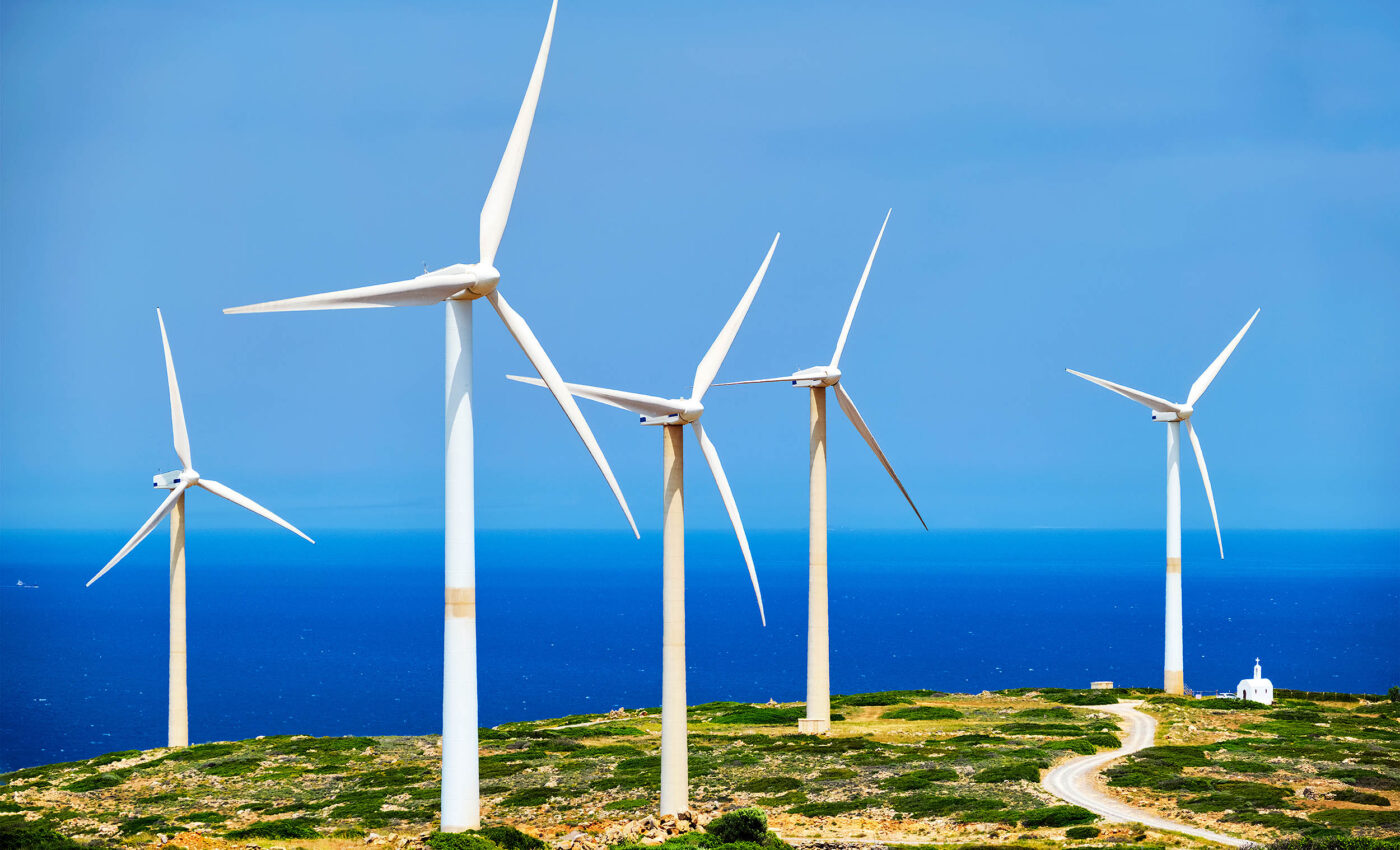
Wind farms require far less land than previously believed
Decision-makers have hesitated to embrace wind farms despite their affordability and renewable nature. This reluctance stems from the belief that wind farms require vast tracts of land. This is especially notable when compared to fossil fuel-driven power plants.
However, researchers at McGill University conducted a remarkable study revealing that this belief may be based on outdated information.
Dispelling the myths of wind farms’ land use
The research, the largest of its kind, examined nearly 320 wind farms across the U.S. Subsequently, findings published in the journal Environmental Science and Technology reveal a significant discrepancy in the way researchers calculate land use for wind farms.
Typically, the entire area of a wind farm is considered dedicated to wind energy. In reality, infrastructure like turbines and roads only occupy about 5% of the land. The majority of the space continues to support other uses, predominantly agriculture.
Existing infrastructure boosts wind farm productivity
By placing wind turbines on land that already has roads and infrastructure, such as agricultural fields, the setup for wind energy becomes significantly more efficient.
Utilizing existing structures minimizes the need for additional space and construction, streamlining the process and reducing the environmental footprint.
As a result, these wind farms are about seven times more land-efficient when it comes to producing energy per square meter.
This level of efficiency is in stark contrast to the efficiency of wind farms established on newly developed sites, where the entire area must be adapted or built from scratch, requiring more land and resources for a comparable amount of energy production.
Overcoming old perspectives
“The land use of wind farms has often been viewed as one of the major hurdles to wind development,” said Sarah Jordaan, an associate professor in the Department of Civil Engineering at McGill and the senior author of the study.
She highlighted that the study’s analysis of nearly 16,000 wind turbines in the western U.S. showed “gas-fired generation offers no real benefits in terms of lesser land use when you consider the infrastructure, including all the wells, pipelines, and roads associated with the natural gas supply chain.”
Innovating for sustainability
This research also broke new ground by integrating geographic information systems (GIS) with machine learning.
Subsequently, researchers developed a deep learning model trained on nearly 2,000 images of wind farms. These images were from the American portion of the Western Interconnection.
This advanced model assessed various factors like turbine placement and the age of the infrastructure, providing a more detailed understanding of the land directly impacted by wind energy facilities.
“The method we have developed is potentially usable for future assessments of various energy technologies,” Jordaan added.
“It sets the stage for the first consistent comparisons of environmental sustainability across different energy technologies in future, which is crucial for energy systems planning aimed at achieving net zero emissions,” she concluded.
Additional advantages of wind farms
Wind farms offer several significant advantages beyond their minimal land use, contributing broadly to environmental sustainability and economic benefits. Here are some key advantages:
- Renewable energy source: Wind energy is a plentiful, renewable resource that reduces reliance on fossil fuels, helping to decrease greenhouse gas emissions and pollution.
- Reduces carbon footprint: Generating electricity from wind does not produce carbon dioxide or other pollutants, making it an environmentally friendly option that contributes to combating climate change.
- Cost-effectiveness: After the initial investment in installation, wind energy has low operational costs since it doesn’t require fuel. The cost of wind energy has also dropped significantly over the years, making it one of the most competitive renewable energy sources.
- Energy independence: By harnessing local wind resources, regions and countries can reduce their dependence on imported fuels, enhancing energy security and stability.
- Job creation: The wind energy sector creates jobs in manufacturing, installation, maintenance, and support services, contributing to economic growth in local communities.
- Compatible with other land uses: As seen in agricultural settings, wind turbines can coexist with other land uses, allowing for continued farming and livestock grazing, thereby supporting rural economies.
- Scalability and flexibility: Wind farms can be scaled up or down to fit the energy needs of a community or region. They can also be deployed in a variety of settings, from large-scale farms to small, distributed units.
- Innovation and technology development: The ongoing development and refinement of wind technology drive innovation across the renewable energy sector, leading to more efficient and effective solutions.
- Water conservation: Unlike power plants that require significant water for cooling processes, wind energy generation uses no water, conserving vital resources particularly in arid regions.
- Public support and policy incentives: Wind energy often enjoys strong public support, which is complemented by government policies and incentives aimed at expanding renewable energy deployment.
These benefits make wind farms a crucial component of a sustainable energy future, addressing environmental, economic, and social goals.
A fresh breeze for wind power
In summary, the McGill University-led study revolutionizes our understanding of wind farm land use, debunking the misconception that wind power requires extensive land compared to fossil fuel-driven power plants.
By combining GIS data with machine learning models, the researchers provide a more accurate assessment of the land directly impacted by wind infrastructure.
This innovative approach highlights the efficiency of wind power and paves the way for consistent comparisons of environmental sustainability across various energy technologies.
As decision-makers consider investments in renewable energy, this research offers valuable insights that can guide informed decision-making and effective energy systems planning, ultimately contributing to a more sustainable future.
The full study was published in the journal Environmental Science & Technology.
—–
Like what you read? Subscribe to our newsletter for engaging articles, exclusive content, and the latest updates.
Check us out on EarthSnap, a free app brought to you by Eric Ralls and Earth.com.
—–













